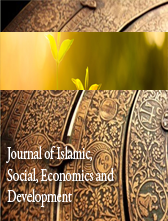REVIEW OF THEORIES AND MODEL OF RESEARCH ON LIMINALITY IN TOURISM
Abstract
Liminality is important in the tourism field to measure the tourist experience from their satisfaction, whether the actual reality experienced meets their expectations. Conceptual research method using the semi-systematic literature review approaches are used in this study. This paper reviews some selected theories and models to comprehend more on the concept of liminality with tourism. For that, the theories and models that would be examined are Five Phases Tourism Model (1966), SERVQUAL Model (1988), Liminality Tourism Structure Model (2019) and Classical and Post-modern Liminality Comparative Theory (2016). The Five Phases Tourism Model is a model used to describe the experience in various phases: expectation, away trip, tourist destination, return trip, and memories, while SERVQUAL Model is used to measure the quality of service. The Liminality Tourism Structure Model describes the tourist experience from various elements such as physical, social, and emotional. Finally, the Classical and Post-modern Liminality Comparative Theory compares the classical liminal experience of society in ancient times and the liminal experience of post-modern society. The literature review results show that the theories and models aid in explaining tourist experience using five phases and was influenced by several aspects. Thus, the combination of all these existing models related to liminality will help to understand tourists more deeply and measure the level of tourist satisfaction that are seen from their experience, expectation, and the actual reality being experienced by them.













